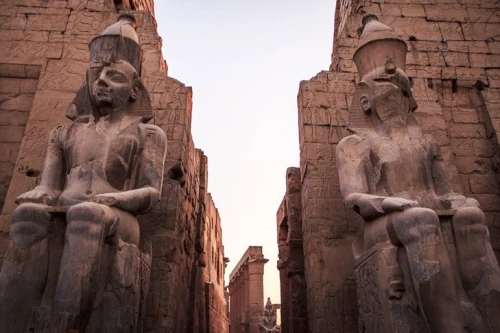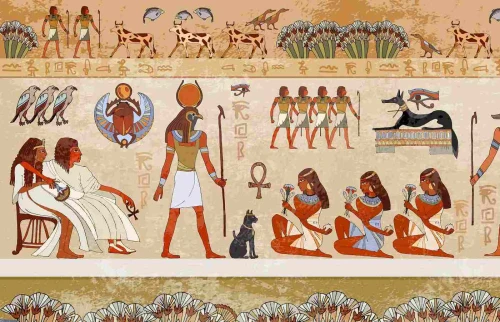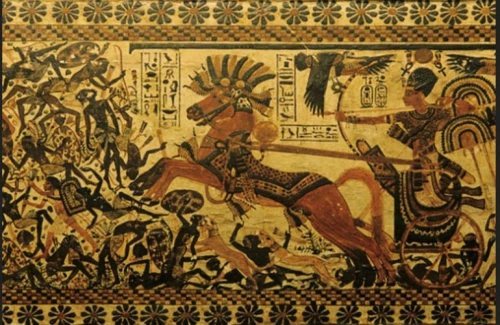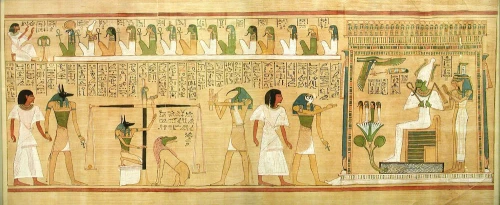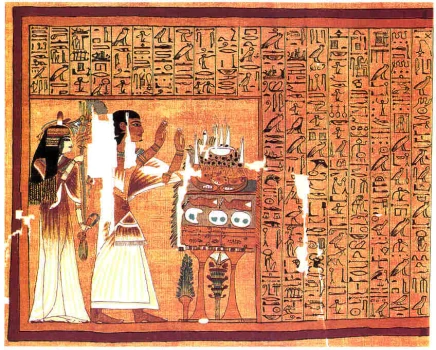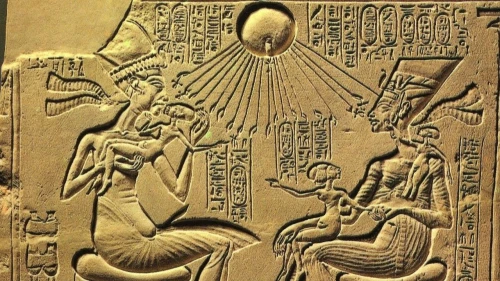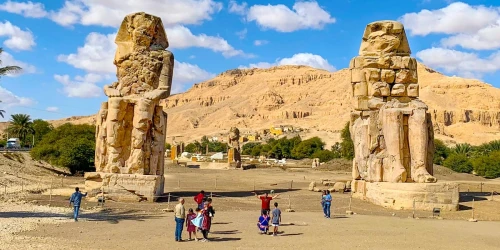
COLOSSI OF MEMNON Two colossal seated statues of the pharaoh Amenhotep III (1390–1352 b.c.), the “Colossi of Memnon,” stood in front of Amenhotep III’s now vanished mortuary temple.
(He was the father of Akhenaten and the grandfather of Tutankhamen.) During the Ptolemaic period, one of the statues was believed to speak for the gods. The statue to the north (to the right when facing them) was damaged by an earthquake in 27 b.c. The fault created in the stone caused it to make a whistling sound every morning, which was interpreted by the priests as the gods speaking. The Greeks called the statue the “Vocal Memnon” and equated it with their Memnon, a character in Homer, who sang to his mother, Eos, goddess of the dawn. The Roman emperor Septimius Severus (a.d. 193–211) ordered that the damage to the colossal statue be repaired, and since then it has not made a sound.
 English
English
 Spain
Spain

